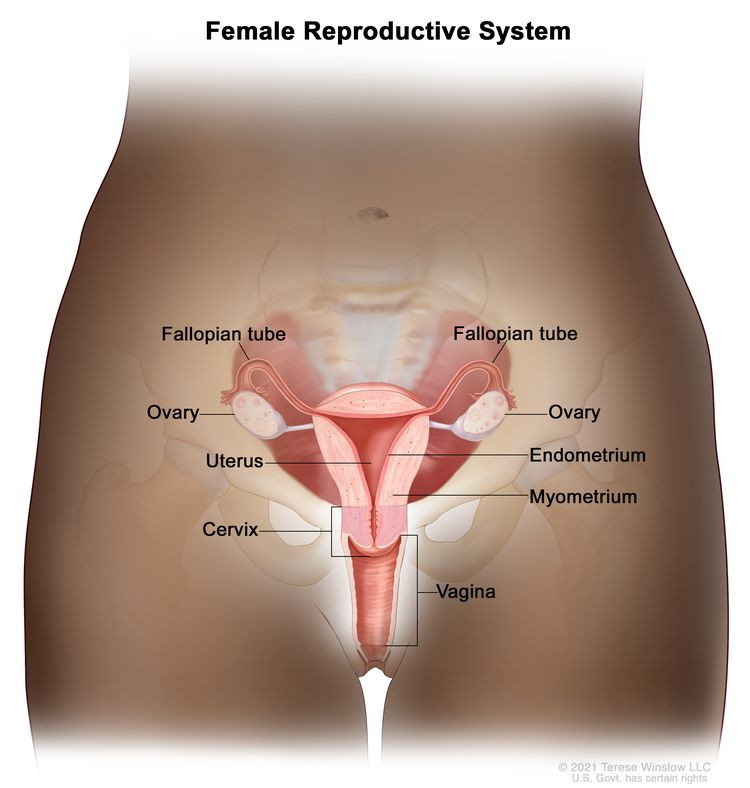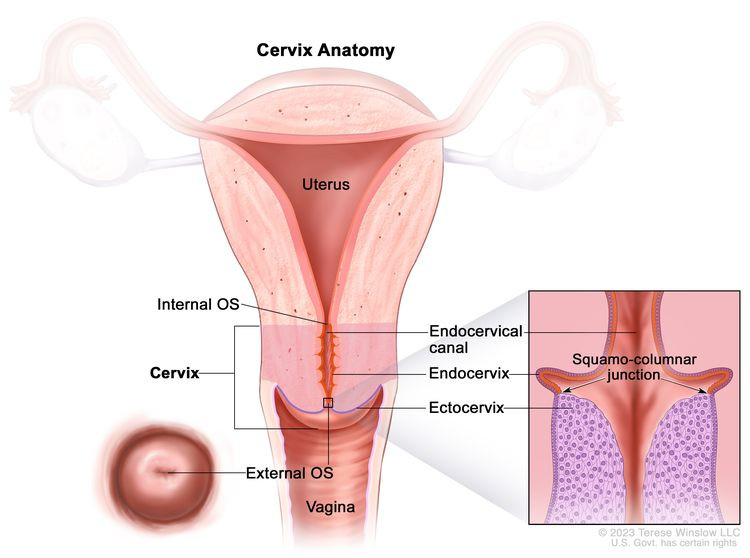The cervix is a vital part of the female reproductive system, often discussed in the context of women’s health and cervical cancer. To understand its significance, it’s crucial to know Where Is The Cervix located and what its anatomy entails. This article will explain the location of the cervix, its structure, and its role within the female body.
The cervix, also referred to as the neck of the womb, is the lower, narrow portion of the uterus. Imagine the uterus as a pear-shaped organ; the cervix forms the bottom tip of this pear. Specifically, the cervix is positioned at the lower end of the uterus, acting as a canal that connects the uterus to the vagina, also known as the birth canal. This positioning makes the cervix a crucial gateway between the upper reproductive organs and the external environment.
To delve deeper into the anatomy of the cervix, it’s helpful to visualize its different parts. The cervix isn’t just a simple tube; it has distinct components that play specific roles. The cervix is composed of two main parts: the endocervix and the ectocervix. The endocervix is the inner part of the cervix, forming the cervical canal, which is the passageway through the cervix. The ectocervix is the outer part that protrudes into the vagina and is visible during a pelvic exam. The opening of the cervix into the vagina is called the external os, while the opening into the uterus is known as the internal os.
 Diagram of the female reproductive system showing the uterus, ovaries, fallopian tubes, cervix, and vagina
Diagram of the female reproductive system showing the uterus, ovaries, fallopian tubes, cervix, and vagina
A particularly important area within the cervix is the squamocolumnar junction, also known as the transformation zone. This is the area where the endocervix and ectocervix meet. The cells in this zone are dynamic and undergo changes over a woman’s lifetime. It’s also the most common site where cervical cancer development begins. Understanding the location of this transformation zone is critical because most cervical cancers originate here from abnormal cell changes.
 Detailed anatomical drawing of the cervix, highlighting the endocervix, ectocervix, and squamocolumnar junction
Detailed anatomical drawing of the cervix, highlighting the endocervix, ectocervix, and squamocolumnar junction
Knowing where the cervix is and understanding its anatomy is not just a matter of basic knowledge; it’s essential for women’s health awareness. Because cervical cancer starts in the cells of the cervix, understanding its location helps in comprehending the importance of regular screening, such as Pap tests and HPV tests, which are designed to detect abnormal cell changes in this specific area. Early detection through these screenings can significantly improve outcomes and prevent cervical cancer progression. The cervix, though a small part of the reproductive system, plays a significant role in both reproductive health and the prevention of cervical cancer.

